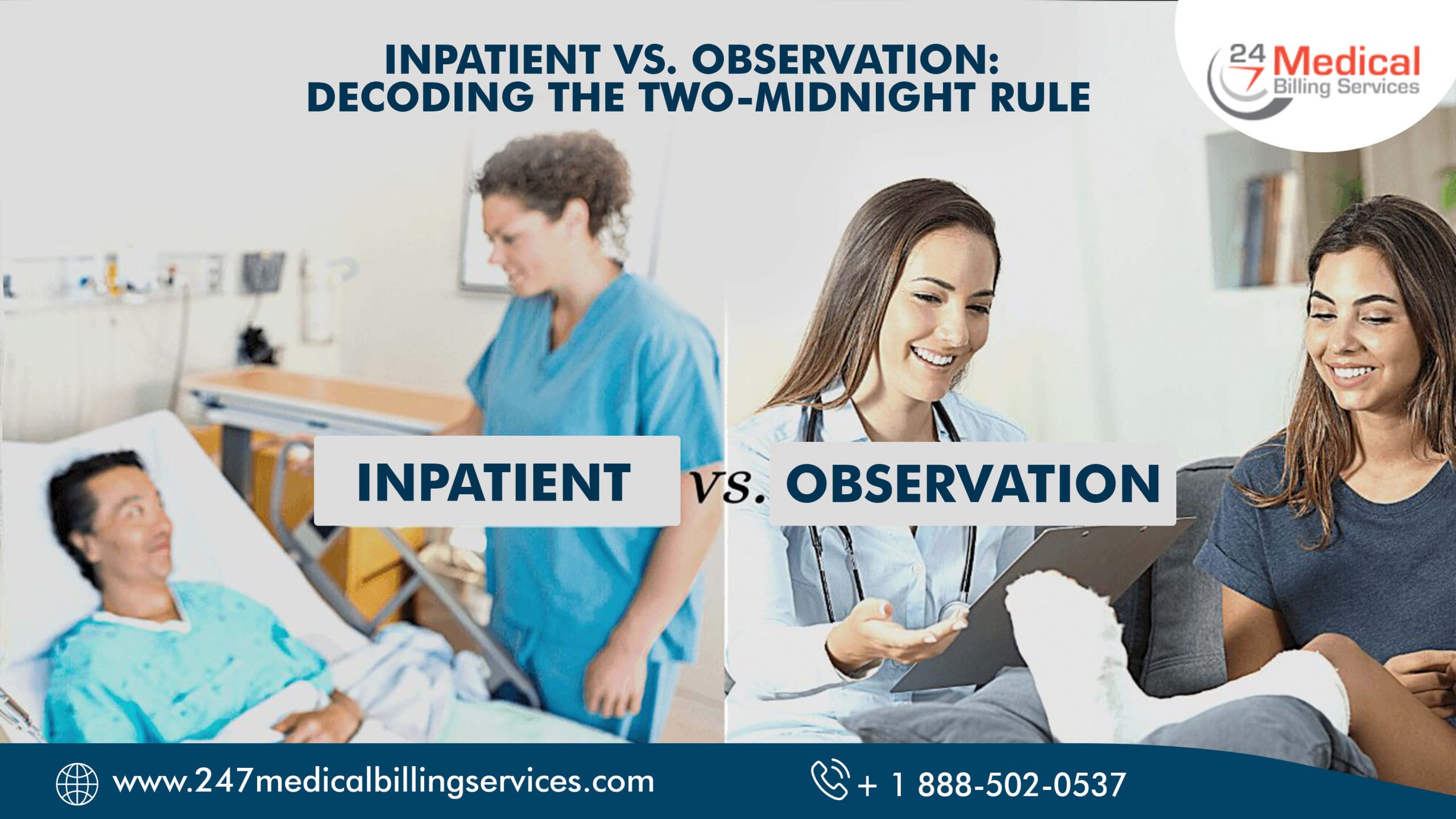
Inpatient vs. Observation: Decoding the Two-Midnight Rule
The Two-Midnight Rule, introduced by the Centers for Medicare and Medicaid Services (CMS) in 2013, is a crucial guideline that governs the classification of patients as inpatients or under observation status in healthcare facilities. This rule plays a pivotal role in determining the appropriate level of care for patients and has significant implications for medical billing and coding processes.
Let’s have a deep dive into the difference between inpatient and observation status while decoding the Two-Midnight Rule:
Overview: The Two-Midnight Rule
The Two-Midnight Rule centers around the concept of time spent in the hospital and the expected duration of medically necessary care. According to the rule, inpatient payment is considered appropriate when a patient is expected to require medically essential hospital care for at least two midnights. This is a key criterion for deciding whether a patient should be considered an inpatient.On the other hand, observation stays are recommended when the expected duration of care is less than two midnights. This distinction is critical, as it influences how healthcare providers code and bill for the services rendered to the patient.
Time of Admission and Two-Midnight Rule:
A notable aspect of the Two-Midnight Rule is the significance of the time of admission. For instance, if a patient is admitted at 11:59 PM and requires 26 hours of care, they may be placed in inpatient status because their care is expected to span two midnights. However, if the admission occurs at 12:01 AM, the patient must be placed in observation status, as the predicted care duration falls short of the two-midnight threshold.Exceptions to the Two-Midnight Rule:
While the Two-Midnight Rule provides a general framework, certain exceptions exist. Newly initiated mechanical ventilation is one such exception. If a patient requires mechanical ventilation soon after admission, regardless of the anticipated duration of care, inpatient status is typically warranted. This exception acknowledges the severity and immediacy of certain medical conditions necessitating inpatient care.Additionally, procedures listed on the Inpatient Only List are excluded from the Two-Midnight Rule. These procedures are inherently inpatient in nature, and therefore, the rule doesn't apply to them. This exclusion ensures that appropriate coding and billing practices align with the specific requirements of these procedures.
Revisions to the Two-Midnight Rule:
Since its inception, the Two-Midnight Rule has undergone revisions to address concerns and improve its practicality. These revisions aim to strike a balance between providing clear guidelines and accommodating the complexities of patient care.Impact on Medical Billing and Coding:
The Two-Midnight Rule significantly influences medical billing and coding processes. Proper patient classification as an inpatient or under observation status is crucial for accurate reimbursement and compliance with CMS guidelines.Inpatient care typically involves higher reimbursement rates compared to observation stays. Therefore, understanding and correctly applying the Two-Midnight Rule ensures that healthcare providers receive appropriate compensation for the level of care provided. Conversely, misclassification may lead to financial repercussions, including potential payment denials or audits.
Medical coders play a pivotal role in translating the Two-Midnight Rule into appropriate billing codes. The International Classification of Diseases, Tenth Edition (ICD-10) codes and Current Procedural Terminology (CPT) codes must accurately reflect the patient's status and the nature of the care provided. Coders need to be well-versed in the intricacies of the rule to ensure compliance and prevent coding errors that could result in billing discrepancies.
Conclusion:
The Two-Midnight Rule is a vital guideline that governs the classification of patients as inpatients or under observation status based on the expected duration of medically necessary care. Understanding the nuances of this rule is essential for healthcare providers, coders, and billing professionals to ensure accurate reimbursement and compliance with CMS regulations.The rule's impact on medical billing and coding is profound, directly influencing reimbursement rates and billing practices. Adherence to the rule not only ensures financial integrity for healthcare facilities but also promotes transparency and accountability in the delivery of patient care.
As the healthcare landscape continues to evolve, staying abreast of any future revisions to the rule is imperative for you involved in the billing and coding processes. You can even opt for outsourcing to 24/7 Medical Billing Services, which offers healthcare providers the advantage of tapping into expertise and efficiency in decoding regulations like the Two-Midnight Rule. With dedicated teams, continuous training, and a focus on compliance, these outsourcing partners ensure accurate code assignment, thorough documentation, and adaptability to regulatory changes. This strategic collaboration not only reduces administrative burdens but also optimizes your revenue cycle, providing a cost-effective solution for navigating the complexities of your healthcare billing and coding.
See also: Transforming Healthcare: The Coding And Payment Revolution For SDOH

.png)